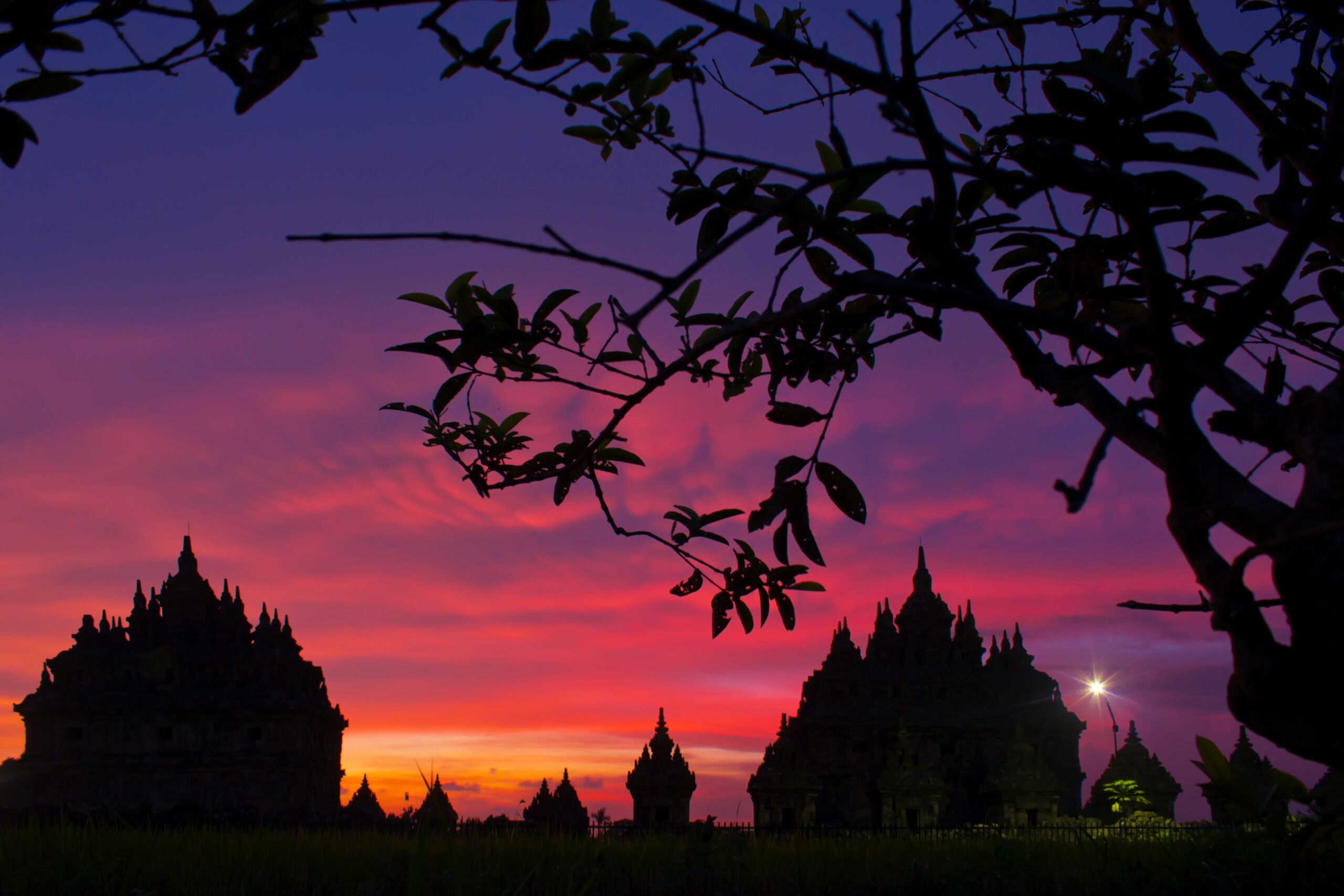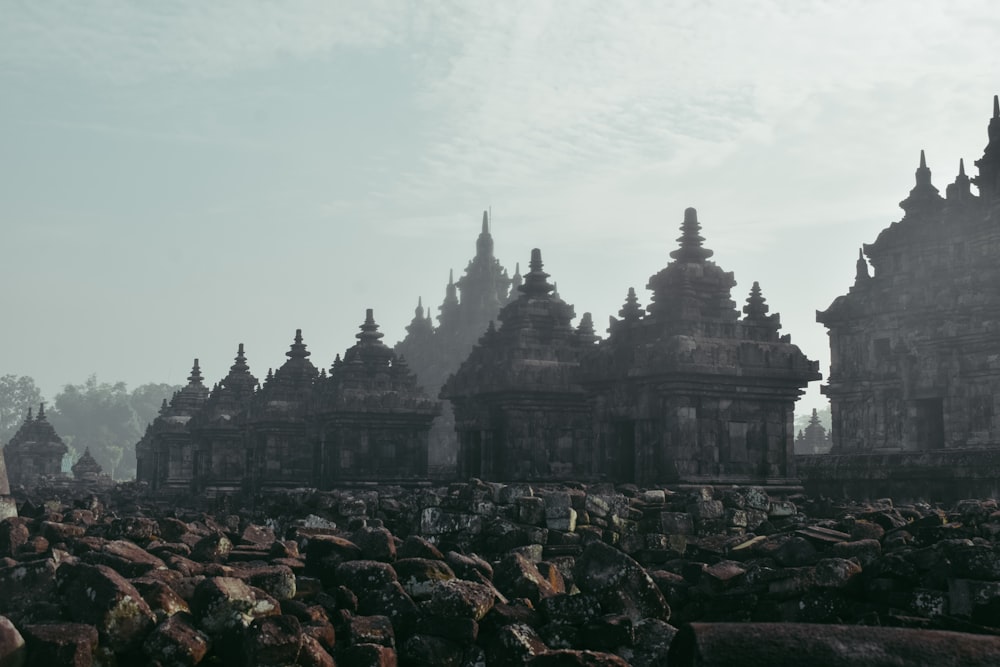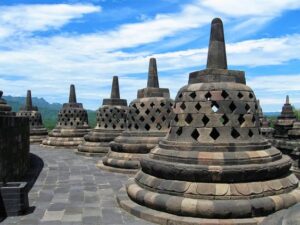Plaosan Temple is a historical heritage located in Bugisan Hamlet, Prambanan Village, Prambanan District, Klaten Regency, Central Java, Indonesia. Known as a monument of love, loyalty and religious harmony, this temple has stunning historical and architectural value.
History of Plaosan Temple
Plaosan Temple was built in the mid-9th century AD, during the reign of Rakai Pikatan and Rakai Balitung from the Sanjaya Dynasty. The Sanjaya Dynasty itself was the ruler of the Ancient Mataram Kingdom which had great influence in Central Java. The construction of Plaosan Temple was carried out as a form of integration between Hinduism and Buddhism that existed at that time.
Plaosan Temple is divided into two complexes, namely Plaosan Lor and Plaosan Kidul. Plaosan Lor Temple has a main temple that is larger and more magnificent than Plaosan Kidul Temple.
Based on archaeological research and discoveries, Plaosan Temple has several unique features, including:
- Architecture: Plaosan Temple has a different architecture from other Buddhist temples in Central Java. This temple has many complicated and detailed decorations.
- Relief: Plaosan Temple has many reliefs that tell Buddhist stories and life during that time.
- Statues: Plaosan Temple has many beautiful and majestic Buddha statues.
Here are some interesting facts about Plaosan Temple:
- Plaosan Temple was founded by King Rakai Pikatan from the Ancient Mataram Kingdom.
- This temple is dedicated to Goddess Tara, the Buddhist protector goddess.
- Plaosan Temple was once the site of a Buddhist monastery.
- Plaosan Temple is a UNESCO world heritage site.
If you want to visit Plaosan Temple, here is some information you need to know:
- Location: Plaosan Temple is located in Bugisan Village, Prambanan District, Klaten Regency, Central Java.
- Opening hours: Plaosan Temple is open every day from 08.00 WIB to 17.00 WIB.
- Ticket price: Plaosan Temple entrance ticket costs Rp. 5,000,- per person.
Plaosan Temple Architecture
Plaosan Temple consists of two temple complexes, namely Plaosan Kidul Temple (south) and Plaosan Lor Temple (north). These two temple complexes have similar architecture, with typical Hindu-Buddhist architectural characteristics that reflect tolerance and harmony between religious communities. Here are some of the architectural features that stand out:
Stupa and Main Temple:
The main temple is located in the center of the complex, surrounded by small stupas. A stupa is a dome-shaped building that symbolizes enlightenment in Buddhism.
Statues and Reliefs:
Plaosan Temple is filled with statues and reliefs depicting stories from both religions, both Hindu and Buddhist. These reliefs depict the stories of the Ramayana and Mahabharata, as well as scenes of people’s daily life at that time.
Kalamakara Ornaments:
Kalamakara ornaments, which are decorations in the shape of mythological creatures, are generally found above temple entrances. These ornaments are often found in various parts of temple buildings, such as at gates, statue niches and temple corners.
Appearance and Symbolism of Kalamakara at Plaosan Temple:
Appearance: Kalamakara found in Plaosan Temple generally has a shape that resembles a giant with wide open jaws and sharp teeth. On the top of the head, there is an ornament that looks like a crown, while on both sides there are hands holding snakes.
Symbolism: Kalamakara symbolizes courage and protection of the temple. A wide open mouth indicates his alertness to all threats, while his sharp teeth reflect his strength in fighting evil.
The uniqueness of Kalamakara ornaments at Plaosan Temple:
Details: The Kalamakara ornaments at Plaosan Temple are decorated with intricate and delicate carvings. The fineness of the carvings shows the high skill of the craftsmen of that time.
Variant: The Kalamakara ornaments at Plaosan Temple do not only have one model, but several variations. Some Kalamakara looked angry, while others were smiling or dancing.
Placement: Kalamakara ornaments at Plaosan Temple are placed in strategic places, such as above the gate, statue niches and corners of the temple. This placement emphasizes Kalamakara’s important role in maintaining the security and safety of the temple.
The following are some examples of Kalamakara ornaments at Plaosan Temple:
Kalamakara above the gate: Symbolizes the bravery of the guards in guarding the temple entrance from all threats.
Kalamakara above the statue niche: Signifies protection for the statue inside.
Kalamakara in the corners of the temple: Symbolizes protection of the entire temple complex from all directions.
Accommodation:
Around the temple complex there are huts used for prayer or as a place for monks to meditate.
The meaning and message of Plaosan Temple

Plaosan Temple has deep meaning and messages in the context of history and cultural diversity in Indonesia. The construction of this temple is not only a place of worship, but also a symbol of harmony between religious communities living side by side peacefully.
Plaosan Temple also reflects the beauty of art and architecture in the past, where Hindu and Buddhist influences blended together and produced extraordinary works of art. The existence of this temple is clear evidence of the cultural and religious diversity that has existed in Indonesia since ancient times.
Beauty and Tourist Attraction

Apart from having high historical and religious value, Plaosan Temple is also one of the popular tourist destinations in Central Java. Tourists can enjoy the beauty of the temple architecture and feel the peaceful and quiet atmosphere around the green and beautiful temple complex.
Plaosan Temple is a historical heritage that is rich in Indonesian cultural riches. Apart from being a monument of love, loyalty and harmony among the people, this temple is also a silent witness to the development of art and architecture in the past. Visiting Plaosan Temple not only provides a valuable tourist experience, but also broadens our understanding of cultural and religious diversity in Indonesia. Interested in visiting Plaosan Temple and its surroundings? Come on, use the Jomblang Cave Tour service to make your trip easier!






